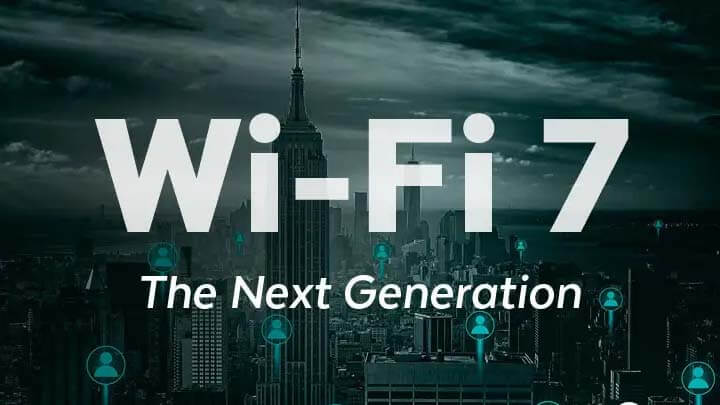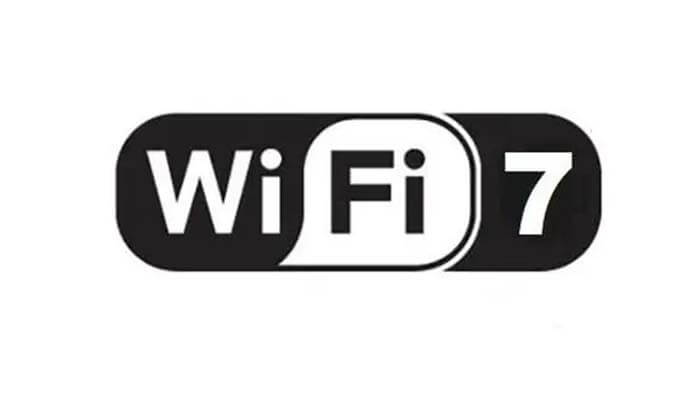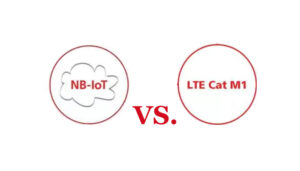Do you know how powerful is WiFi 7?
After Qualcomm released its Wi-Fi 7 networking solution, WiFi7 has become one of the most discussed topics in the industry recently.
How powerful is WiFi 7 when WiFi 6 is not even fully popular?

After the emergence of 5G and gigabit optical broadband, telecommuting, online video conferencing, and cloud computing applications have quietly come into our lives. And new applications such as 4K/8K HD video, VR/AR, and cloud games are no longer new.
These new applications have a common feature that they have high requirements for network throughput and latency.
Therefore, for this matter of networking, the public needs not only a high-speed, low-latency communication network but also a high-speed, low-latency networking experience for all kinds of smart terminals in their hands.
In this way, Wi-Fi, the most used networking tool and an important entrance to the network, has come to the time of having to upgrade.
In 2019, Wi-Fi 6 will be released with Gigabit optical broadband, which is capable of speeds far exceeding those of 4G. And Wi-Fi 7 will provide an even higher network connection speed.
From the relevant data, WiFi7 is expected to be able to support up to 30Gbps of throughput, with a maximum network speed of 46.4Gbps, which is 4.8 times higher than WiFi 6’s maximum network speed of 9.6Gbps. So it seems that WiFi7 is totally delivering lightning-fast speeds.
In addition to fast speeds, WiFi7 also supports 3 bands, 2.4 GHz, 5 GHz, and 6 GHz, compared to WiFi6.
In addition, Wi-Fi 7 can support up to 16 antennas to send and receive signals.
What is this concept? Simply put, the capacity and channels for transmitting data have become larger.
If you take the high speed to describe Wi-Fi 7, it means that WiFi7 is a high speed not only the car can become an airplane and the runway is as wide as a square.

What’s even better is that, unlike WiFi6, WiFi7 supports 2.4 GHz, 5 GHz, and 6 GHz bands at the same time. This means that WiFi 7 can automatically switch between the three bands according to the strength of the signal, automatically putting the signal into the right band.
At the same time, WiFi 7 can also automatically adjust the load of the network connection according to the field network connection environment, taking advantage of its own multi-channel for concurrent data transmission.
Such a network connection environment can obviously meet more applications that require high network throughput and latency, keeping the network connection at high speed at all times.
Such amazing ability if used in today’s production, life, the experience can be bursting.
For example, many people will now use the remote office, online video conferencing will inevitably encounter slow, lagging situations. Especially in an environment with a large number of people using the Internet, everyone wants to not lag is almost impossible. But with WiFi 7, everyone can get high-speed access to the Internet.
When everyone gets together to play large online games and gaming games (latency below 5ms), WiFi6 can be difficult to take care of every device and keep all the access devices with high-speed access. But WiFi 7 can achieve what WiFi6 cannot.
In addition, in the future, after the emergence of immersive virtual reality network applications such as metaverse, 4K/8K HD video (transmission rate may reach 20Gbps), VR/AR synchronous access (headset binocular rendering) require faster network speed, lower latency, and higher network access throughput. The advent of the WiFi 7 can be a great help for such applications.
After the launch of WiFi 6, its transmission speed is only 25% higher than the previous WiFi 5, only more to improve the quality of the network after the connection of multiple devices. This has led to many users being less interested in WiFi6 so far.
If you don’t have access to gigabit broadband and dozens of smart devices connected at the same time, the demand for Wi-Fi 6 is actually not very high.
The emergence of Wi-Fi 7 upgrades multi-device connectivity and high speed, low latency transmission speeds to lightning fast speeds. From this point of view alone, WiFi 7 is indeed quite impressive. And after the new applications such as 4K/8K HD video and meta-universe mature and start to spread, WiFi7 is even more impressive.
Today, Wi-Fi is now an inseparable part of our daily life. Analysis data from a market research firm shows that the domestic Wi-Fi IoT market will grow at a compound annual growth rate of 29%, and the number of connections to indoor network devices will continue to increase in the future, with users demanding even higher levels of low latency and high transmission rates.
However, the global Wi-Fi 7 technology specification has not yet been finalized. Although Qualcomm has released the world’s first commercial WiFi 7 professional network solution, the industry expects those mature Wi-Fi 7 products will not appear until 2024. Let’s wait for the arrival of the Wi-Fi 7.
Besides the How Powerful is WiFi 7 article, you may also be interested in the below articles.
PCB Antenna VS. External Antenna
Ceramic Antenna VS. PCB Antenna, A Comparison Guide
Wifi vs. 5G, is 5G better than Wifi?
Mobile Networks’ Evolution From 1G To 5G




